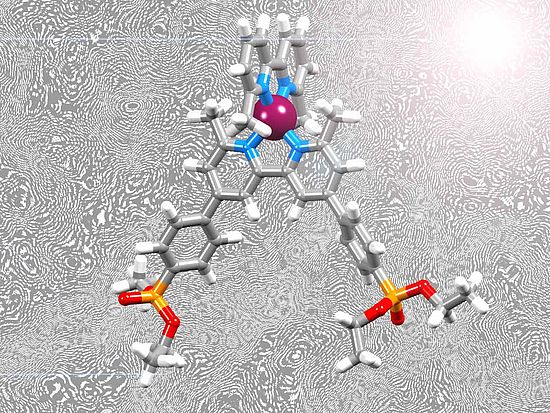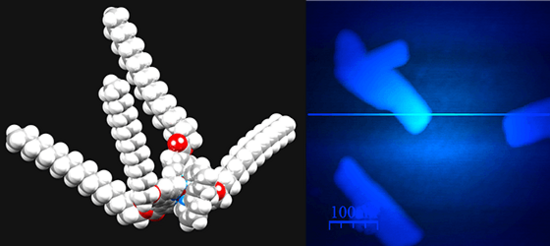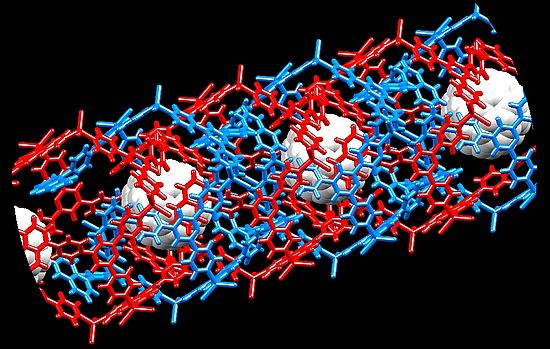Research Topics (active until start of 2023)
1) Light harvesting using inorganic coordination complexes as dyes in dye-sensitized solar cells (DSCs)
2) Development of emissive complexes for application in light-emitting electrochemical cells (LECs)
3) Water splitting, water oxidation catalysts and photocatalytic water reduction
4) Functional coordination polymers and networks
1) Light harvesting using inorganic coordination complexes as dyes in dye-sensitized solar cells (DSCs)

We focused on the development of dyes (sensitizers) for attachment to n-type semiconductors (usually TiO2) for incorporation into DSCs. The now well-established Grätzel-type DSCs use ruthenium(II)-containing dyes, and our research thrust was the development of dyes that contain first row d-block metals (e.g. copper, iron, zinc) which are Earth abundant. The major challenge is to increase the sunlight-to-electrical-power conversion efficiencies of the dyes.
For an overview of this area:
The emergence of copper(I)-based dye sensitized solar cells
C. E. Housecroft and E. C. Constable
Chem. Soc. Rev., 2015, 44, 8386-8398. doi.org/10.1039/C5CS00215J
The versatile SALSAC approach to heteroleptic copper(I) dye assembly in dye-sensitized solar cells
F. J. Malzner, C.E. Housecroft and E.C. Constable
Inorganics, 2018, 6, 57. doi.org/10.3390/inorganics6020057
See also our most recent publications under 'Publications'.
2) Development of emissive complexes for application in light-emitting electrochemical cells (LECs)
Tuning the photoluminescence (PL) properties of iridium(III) complexes of the type [Ir(N^N)(C^N)2]+ or copper(I) coordination compounds if the type [Cu(P^P)(N^N)]+ in which N^N is a chelating ligand such as a 2,2'-bipyridine derivative, C^N is a cyclometalling chelate and P^P is a wide bite-angle bisphosphane ligand, can be achieved by careful selection and combination of the ligands. Colour tuning is one goal; another is extending the lifetimes and increasing the quantum yields of the emissions. For applications in light-emitting electrochemical cells, we must also investigate the electroluminescent properties under device configuration - this work has been carried out in collaboration with the research groups of Professor Henk Bolink and Professor Enrique Ortí (University of Valencia).

For insight into this area:
Over the LEC rainbow: colour and stability tuning of cyclometallated iridium(III) complexes in light-emitting electrochemical cells
C. E. Housecroft and E.C. Constable
Coord. Chem. Rev., 2017, 350, 155–177. doi.org/10.1016/j.ccr.2017.06.016
[Cu(P^P)(N^N)][PF6] compounds with bis(phosphane) and 6-alkoxy, 6-alkylthio, 6-phenyloxy and 6-phenylthio-substituted 2,2'-bipyridine ligands for light-emitting electrochemical cells
M. Alkan-Zambada, S. Keller, L. Martínez-Sarti, A. Prescimone, J.M. Junquera-Hernández, E.C. Constable, H.J. Bolink, M. Sessolo, E. Ortí and C.E. Housecroft
J. Mater. Chem. C, 2018, 6, 8460-8471. doi.org/10.1039/C8TC02882F
See also our most recent publications under 'Publications'.
3) Water splitting, water oxidation catalysts and photocatalytic water reduction
Water splitting is the conversion of liquid water to H2 and O2 using visible light energy. Nature achieves this by photosynthesis, and in biological processes, a highly organized phospholipid membrane is crucially important. We developed approaches to water splitting (to form H2 and O2 from H2O) and water oxidation (looking only at one half of the water splitting process) catalysts. Most recently, we turned our attention to H2 evolution using photocatalysts under solar irradiation, and developed TiO2 and perovskite nanoparticle (NP)-supported heterogeneous catalysts with the catalytic activity of the NP-supported systems outperforming previously reported, related homogeneous catalysts.

For relevant work:
Assembling model tris(bipyridine)ruthenium(II) photosensitizers into ordered monolayers in the presence of the polyoxometallate anion [Co 4(H2O)2 (α-PW9O34)2]10-
N. S. Murray, J. A. Rudd, A.-C. Chamayou, E. C. Constable, C. E. Housecroft, M. Neuburger and J. A. Zampese
RSC Advances, 2014, 4, 11766-11775.
Attraction in Action: Reduction of Water to Dihydrogen Using Surface-Functionalized TiO2 Nanoparticles
S. A. Freimann, C. E. Housecroft and E. C. Constable
Nanomaterials 2022, 12, 789. doi: 10.3390/nano12050789
For our most recent publications, see 'Publications'.
4) Functional coordination polymers and networks

The combination of transition metal-based building blocks with polypyridyl ligands such as 4,2':6',4''-terpyridine is a powerful strategy for the assembly of 1D-, 2D and 3D polymers and networks. Gaining control over the assembly processes is challenging. Ligand backbones may be functionalized with, for example, photoactive domains. Our interests in these systems are both understanding their structural characteristics (challenging crystallography) and developing functionalized systems that can act as, e.g. sensors or host materials.
For overviews of our recent work, see:
Divergent 4,2′:6′,4′′- and 3,2′:6′,3′′-terpyridines as linkers in 2- and 3-dimensional architectures
C. E. Housecroft, CrystEngComm, 2015, 17, 7461-7468. doi.org/10.1039/C5CE01364J
Tetratopic bis(4,2':6',4''-terpyridine) and bis(3,2':6',3''-terpyridine) ligands as 4-connecting nodes in 2D-coordination networks and 3D-frameworks
E.C. Constable and C. E. Housecroft
J. Inorg. Organomet. Polym. Mater., 2018, 28, 414-427. doi.org/10.1007/s10904-017-0671-0
Ditopic and tetratopic 4,2':6',4"-Terpyridines as Structural Motifs in 2D- and 3D-Coordination Assemblies
C. E. Housecroft and E.C. Constable
Chimia, 2019, 73, 462-467. doi.org/10.2533/chimia.2019.462
